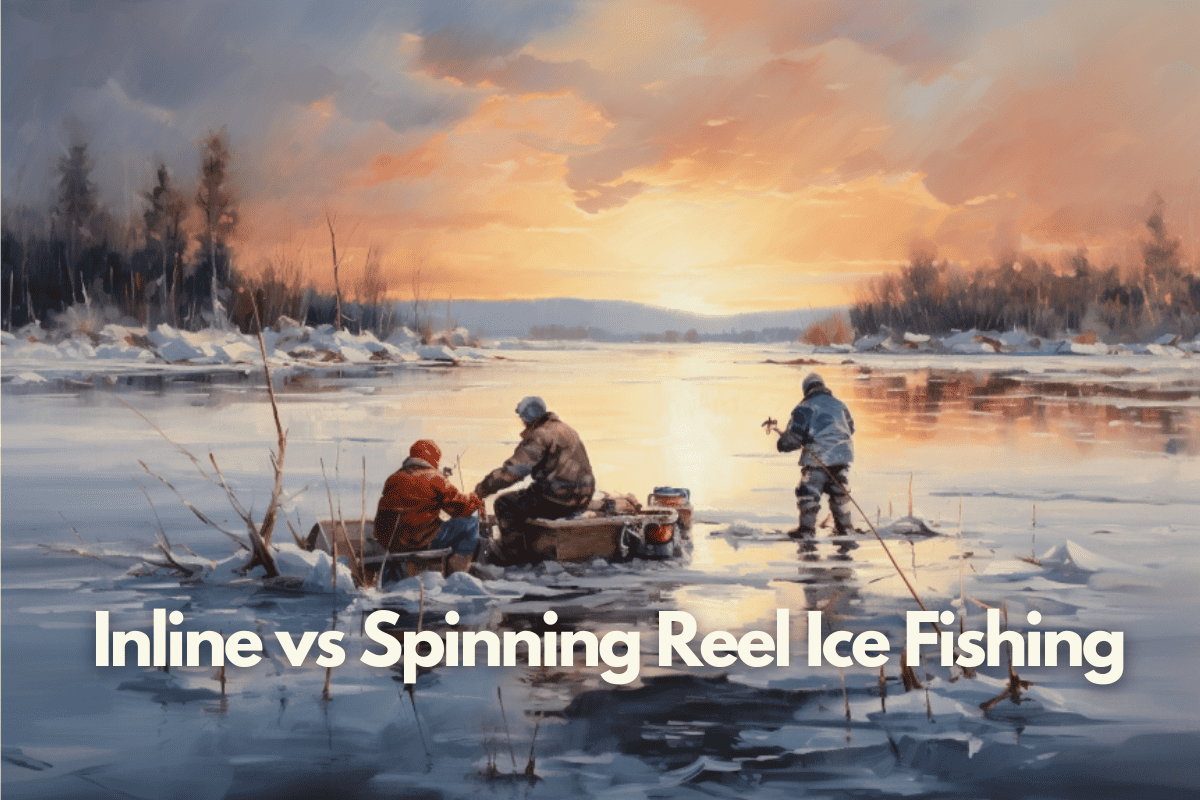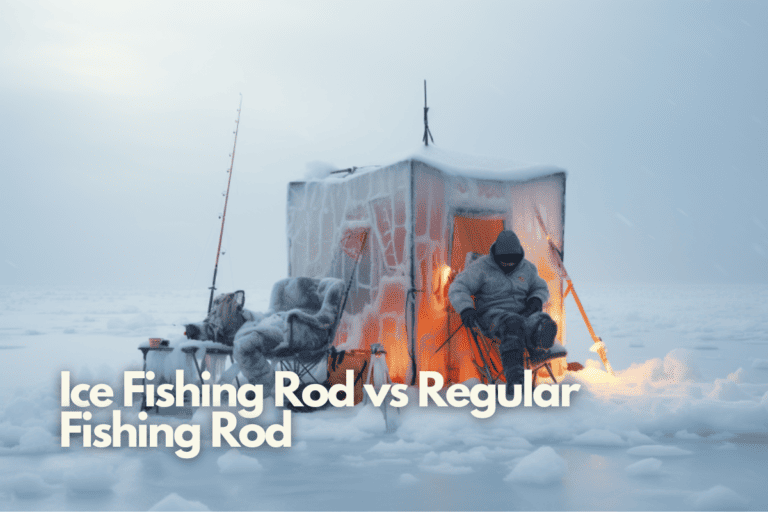Inline vs Spinning Reel Ice Fishing: Which One Should You Choose?

Ice fishing is a sport that requires precision, patience, and the right equipment. One of the most debated topics among ice fishing enthusiasts is ‘inline vs spinning reel ice fishing’. Both have their merits, but which one is the best fit for your ice fishing adventures?
Let’s dive into the details.
Inline vs Spinning Reel Ice Fishing: Jigging vs. Deadstick
The primary factor when choosing between an inline reel or spinning reel is the technique you plan to use. Inline reels are typically preferred for jigging. They allow the line to lay on the spool without twisting, ensuring that the bait can be jigged without unnecessary spinning.
Jigging: This technique involves actively moving the bait in a vertical motion to mimic the behavior of prey. Inline reels are typically preferred for jigging. They allow the line to lay on the spool without twisting, ensuring that the bait can be jigged without unnecessary spinning. The direct line feed of inline reels ensures that there’s minimal line twist, making them ideal for this active fishing technique.
Deadstick: Deadsticking, on the other hand, is a more passive approach. It involves letting the bait sit stationary in the water, relying on the natural movements of live bait or the subtle currents under the ice to provide the action. Spinning reels, with their vast array of models and easy drag adjustments, are the top choice for deadsticking, especially when using live bait. The free-spooling nature of spinning reels allows fish to take the bait and run, giving the angler a better chance to detect and set the hook on a bite.
On the other hand, spinning reels, with their vast array of models and easy drag adjustments, are the top choice for using live bait.
Size of Fish
Inline reels have seen significant improvements over the years. However, they might not be the best choice for larger fish.
The drag adjustments on a spinning reel are superior to those on an inline reel. Inline reels excel when fishing in shallow waters for smaller species like panfish and small walleye. They can be paired with small jigs to present baits perfectly.
For anglers targeting larger species like northern pike or lake trout, a spinning reel might be more appropriate due to its versatility and robust drag system.
Price Considerations
Inline reels can be a bit on the pricier side. If you’re a panfish angler, they might be worth the investment. It’s advisable to invest in one or two high-quality inline reels for your primary setup.
Spinning reels, however, are available at various price points, making them a more affordable backup option.
Skill Level
For beginners, spinning reels are the way to go. They are versatile and less finicky than inline reels.
Inline reels, with their unique design and function, might require some getting used to. However, once mastered, they can offer precision and efficiency, especially for jigging techniques.
Once you’ve mastered ice fishing with a spinning reel, you can gradually transition to using an inline reel.
Versatility
If you’re looking for a reel that’s versatile and can handle various ice fishing situations, spinning reels are your best bet. Spinning reels are versatile workhorses. They can handle various lures, from jigs to spoons to live bait rigs, and are suitable for both jigging and deadsticking techniques.
Inline reels, while exceptional for jigging, might not be as versatile but offer unparalleled precision for that specific technique. While inline reels might present baits slightly better, spinning reels are suitable for any ice fishing technique.
Endurance on the Ice
This isn’t about which reel will last longer in terms of years, but rather which one will endure the conditions of each trip better.
Inline reels are less prone to locking up due to water exposure, thanks to their gear spacing. They’re also easier to thaw out. A simple method like holding an inline reel near a heater or breathing on the gears can make it functional in seconds. In contrast, a spinning reel might take a few minutes to thaw.
Final Thoughts

The choice between inline and spinning reels for ice fishing boils down to personal preference, the type of fish you’re targeting, and your fishing technique. Both reels have their advantages, and understanding these can help you make an informed decision. Whether you’re a seasoned angler or just starting, it’s essential to choose the equipment that aligns with your needs and enhances your ice fishing experience.
FAQ
Q1: What are the main advantages of inline reels for ice fishing? A: Inline reels excel at jigging due to their design. They are particularly advantageous when fishing in shallow waters for smaller species. The direct line feed and efficient line management make them well-suited for precise presentations.
Q2: Are spinning reels suitable for beginners in ice fishing? A: Yes, spinning reels are often recommended for beginners in ice fishing. They offer versatility and are less sensitive to line twist, making them easier to handle. Their user-friendly design and ease of use make them an excellent choice for those new to the sport.
Q3: Which reel is more durable in icy conditions? A: Inline reels tend to be more durable in icy conditions. They are less likely to experience freezing-related issues and are easier to thaw out if they do freeze. This durability ensures smoother operation during cold weather outings compared to spinning reels.





